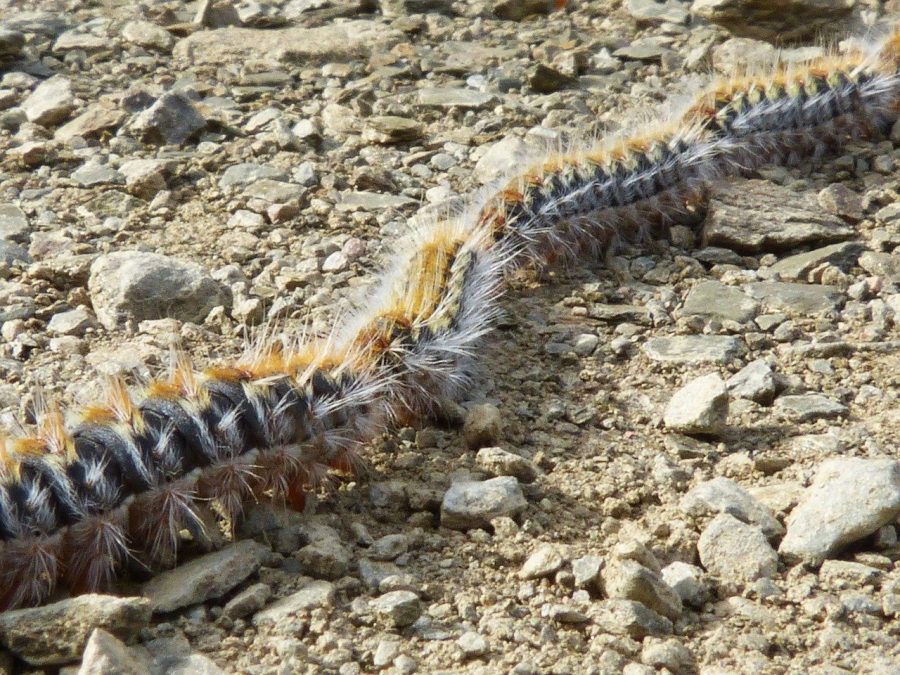For those of us with young children and pets, it is important to be aware of the Pine Processionary Caterpillars. They might look innocent enough if you see them crossing the road or a path, but they can be deadly.
Look for “candy floss like” cocoons
They can be difficult to spot when on the ground, but you will easily see their “candy floss like” cocoons high in the pine trees at this time of year. Each nest could hold around 300 caterpillars. Usually, they start to appear from the nests around December until March. But this can depend also on the weather. In this phase, they are searching for a suitable place to go underground when they will eventually emerge as moths.
It is now, when they leave the trees that they become harmful. They can be dangerous and sometimes fatal especially to dogs and cats. Many pet owners have lost their animals due to contact with these caterpillars. When the caterpillars are on the ground, they form a line. Sometimes there can even be hundreds of them in the line.
Thousands of poisonous hairs
The processionary caterpillar has thousands of small fine poisonous hairs or bristles that cover their bodies. They are around 3cm long and are a mix of brown and orange in colour. The danger comes from their bristles. Often the bristles are too small for us to see as the caterpillars drop them as they move around. Their hairs can even be in the air around the nests or on a windy day. Furthermore, they can still cause a problem even if the caterpillar is dead.
Direct contact with the processionary caterpillars must be avoided
Animals are naturally curious. And as such, direct contact with the caterpillars must be avoided. It has been known for dogs to have their tongues amputated if they get close and sniff the procession. Also, for children, and even adults there can be a reaction. For example, irritation, inflammation or a rash on the skin, difficulty breathing or in extreme cases, it could lead to anaphylactic shock.
If you, your child, or pet comes into contact with these hairs, you should seek medical or veterinary advice immediately. Vets often receive emergency calls at this time when the processionary caterpillars are migrating. Symptoms can include severe distress, excessive drooling and chewing at nothing or small white spots on the tongue and in the mouth.
Get the professionals in
Under no circumstances should you try to remove caterpillars or their nests. The hairs can be in the air and as they contain a toxin, irritated eyes and coughing are not uncommon. The individual hairs are like a hook and difficult to remove. The nests are also dangerous to touch. The best option is to get professionals to deal with the problem. Better still, there are options to prevent the construction of the nests in the first place. Ideally, prevention methods should be carried out around September or October. This method also helps to keep the pine trees health, as otherwise the larvae eat the pine needles which can lead to problems for the tree.


